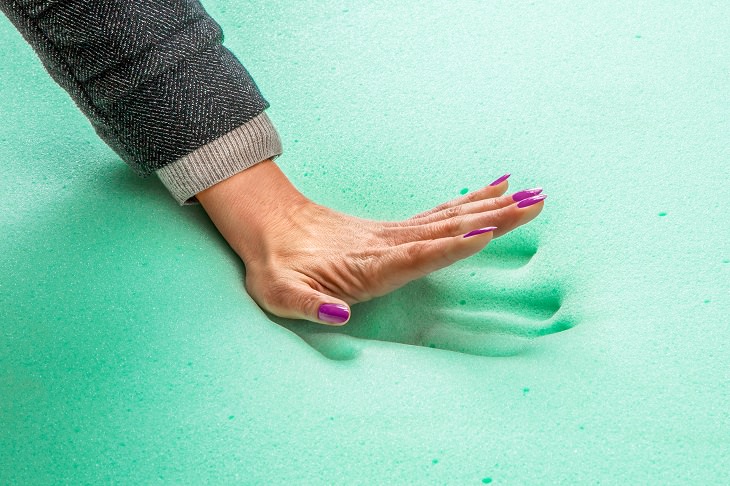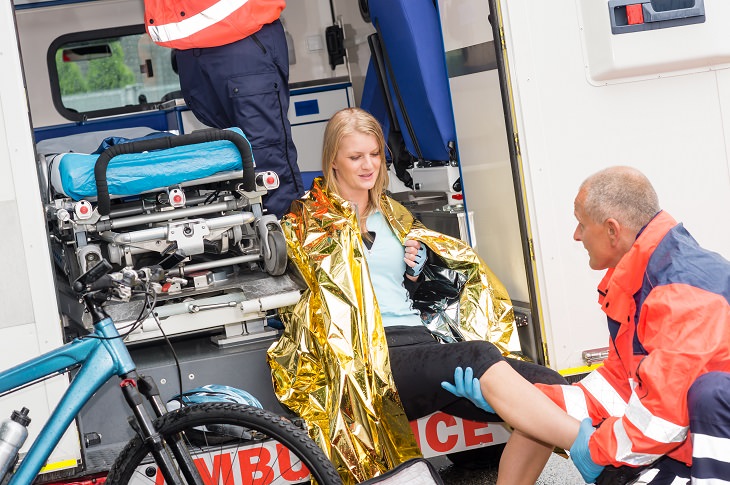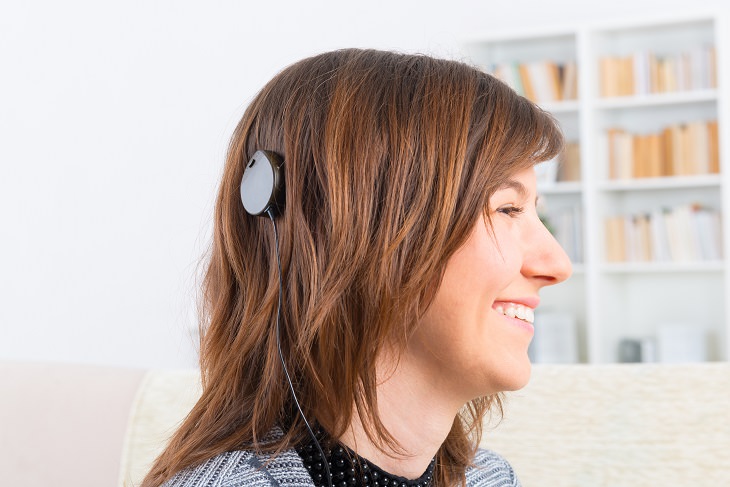
NASA has been inventing for decades and much of the technology that they have created has brought space age tech right into the public domain. Some technologies, such as Velcro and Tang, are wrongly associated with NASA (though NASA helped make them popular), but many others simply wouldn’t exist with NASA scientists and engineers pushing the boundaries of human understanding.
Since its founding, nearly six decades ago, NASA’s primary charter has been “to provide for research into problems of flight within and outside the Earth’s atmosphere and for other purposes.” As a result of this noble cause, many new scientific discoveries, patents, and spinoff technologies have been created. The following space age tech inventions and technologies that we use every day are some great examples.

This was first developed by NASA in 1966. The original idea was to make customizable seats for astronauts to alleviate, in part, the effects of G-force during takeoff and landing.
However, the engineers soon realized that the large variability between astronaut physiques could cause a bit of a problem. They also noted that their body shapes change as they train. Therefore, in theory, this would mean that individual custom-seats might have needed to be changed for every flight – which would be far from practical. Another solution needed to be found!
Their solution was to create a material that could mold to the astronaut’s shape and return to its normal state when not in use – hence the term memory foam.
NASA made memory foam available to the public domain in the early 1980s. Although it was initially very expensive for private enterprises to replicate, the cost of manufacturing this material has dropped dramatically over time. Nowadays, it can be found in many products ranging from mattresses to sports helmet liners.
Many commercially available baby formulas contain nutritional enrichment ingredients that were created by NASA. They were exploring the potential for algae to be used as a recycling agent for long-duration space travel that later led to the discovery of Formulaid.
This algae-based vegetable oil was then commercially produced by Martek Biosciences Corporation in Maryland by some former NASA scientists who had worked on the project in the 1980s. Formulaid is thought to be extremely beneficial to infant mental and visual development and it’s also considered to be a good dietary supplement. This is because it contains two essential fatty acids - Arachidonic Acid and Docosahexaenoic Acid.
Coincidentally, these two fatty acids can also be found in human milk and tend to be lacking in instant formulas for young children. Both of these fatty acids are very important for brain gray matter. Despite their apparent importance, they cannot be made in the human body, so need to be gained from your diet.

The name might be a bit of a giveaway, but your common and garden “Space Blanket” (often found in camping equipment and first aid kits) is indeed the product of NASA research. Space blankets, for those who don’t know, are light blankets that are made of heat-reflective thin plastic sheeting.
Their design is perfect for reducing heat loss from the body that would otherwise be lost through water evaporation, radiation, or convection. However, the material was originally designed to be used on the exterior surfaces of spacecraft, for much the same purpose.
This product was first developed by NASA’s Marshall Space Flight Center in 1964 for use in the U.S. Space Program. Space blanket material is usually silver or gold in color and is capable of reflecting up to 97% of radiated heat. For space applications, polyamide substrate is usually also used as it’s more resistant to the hostile environments of space.
Nowadays, Hazard Analysis and Critical Control Point (HACCP) is an integral part of food safety guidelines all over the world. It was originally devised in the 1960s through a collaboration with NASA and the Pillsbury Company.
At the time, NASA realized that they needed a means of ensuring that any food sent to space was absolutely free of disease-producing bacteria and other toxins. They looked to one of the industry leaders at the time, Pillsbury, to help them out.
The pair quickly realized that the conventional end of process testing consumed the entire sample product and was entirely counterproductive. What they needed was a system of testing at points throughout the manufacturing process which would ensure all end products met the same acceptable standard."
Pillsbury drew some inspiration from NASA’s engineering critical control point concept and applied its concepts to the manufacturing of food products. This allowed for the prevention of contamination rather than evaluating the end product.

Adam Kissiah, a former NASA instrumentation engineer, created cochlear implants in the mid-1970s. He used his lunch breaks and other free time to study the effects of engineering principles on the middle ear.
He was driven to develop this device by his own frustration with his own poor hearing. He had also been the recipient of three failed corrective surgeries to fix the problem. His research and development took about three years to complete and in 1977, he received a patent for his cochlear implant. The traditional hearing aids of the time simply amplified sounds for the patient, but Kissiah’s device works differently.
His cochlear implants are able to choose speech signal information and convert them into electrical impulses in the patient’s ear. It effectively bypasses the patient’s natural hearing apparatus to send electrical impulses to different regions of their auditory nerve.
Since its invention, over 320,000 lives have been improved by these corrective implants. These include patients who have been deaf since birth.
The Super Soaker range of water guns was created by former United States Air Force and NASA engineer, Dr. Lonnie Johnson. Johnson thought of the idea when he was experimenting with refrigeration systems in his bathroom.
During one of his experiments, a powerful stream of water shot out of the equipment he was working on. He instantly recognized the potential for making a pressurized water gun and set about making a prototype.
This prototype consisted of PVC pipers, acrylic glass, and an empty soda bottle. He wanted to produce the toy quickly himself but soon realized that the capital he needed was far too much. Therefore, he approached various toy brands but had no success until he met the Vice President of Larami Toy Company in 1989 at a toy fair. After some minor adjustments, the first super soaker, "Power Drencher,” went on sale in 1990.
The brand name changed to Super Soaker in 1991 and it’s now owned and distributed by Hasbro under the Nerf brand. They have since become one of the most popular toys ever made.

These were jointly developed by NASA’s AMES Research Center and the Foster-Grant Corporation. Prior to their development, lenses were mostly made of ground and polished glass.
In 1972, the FDA passed a regulation that required sunglasses and prescription lenses to be shatter resistant. This led manufacturers to turn to plastic lenses instead of glass ones. However, plastic lenses were prone to scratching, so a solution was needed. IT was eventually found when NASA developed a series of scratch-resistant surfaces for astronaut helmets and other plastic aerospace equipment.
In 1983, Foster-Grant were given a license from NASA to further develop and produce scratch-resistant plastics. They combined their own research with NASA’s and brought the technology to the market.
Nowadays, most prescription lenses, sunglasses, and safety lenses around the world are made of scratch-resistant plastic.
NASA has contributed a lot to the field of prosthetics and artificial limbs. In fact, their continued investment in this field has led to the incorporation of many space-age advancements such as shock-absorbing and cushioning.
This has paved the way for the creation of improved prosthetics for humans and animals alike. By working alongside companies such as Environmental Robot’s Inc., other developments such as artificial muscle systems, sensors and actuators are quickly being refined and incorporated into modern dynamic artificial limbs.
Other applications include reducing friction between the limb and the skin as well as reducing heat and moisture buildup.
Embedded Web Technology software, or EWB, was first created by NASA. It was designed to allow astronauts to operate and monitor experiments on the ISS remotely over the internet.
NASA later released the technology to the public domain, paving the way for the recent explosion in the Internet of Things technology. An interesting example comes from companies like TMIO LLC. They used the technology and further developed it to create their “Connect I0” smart oven. This oven combines heating and cooling capabilities to store and cook food on demand.
A load of other companies are also using the same principle to deliver a wide range of over-the-internet control and management devices. Devices such as smart thermostats, smart light bulbs, and smart locks have all benefited from NASA’s space-age technology.
Source: interestingengineering
Images: depositphotos
Related Articles: